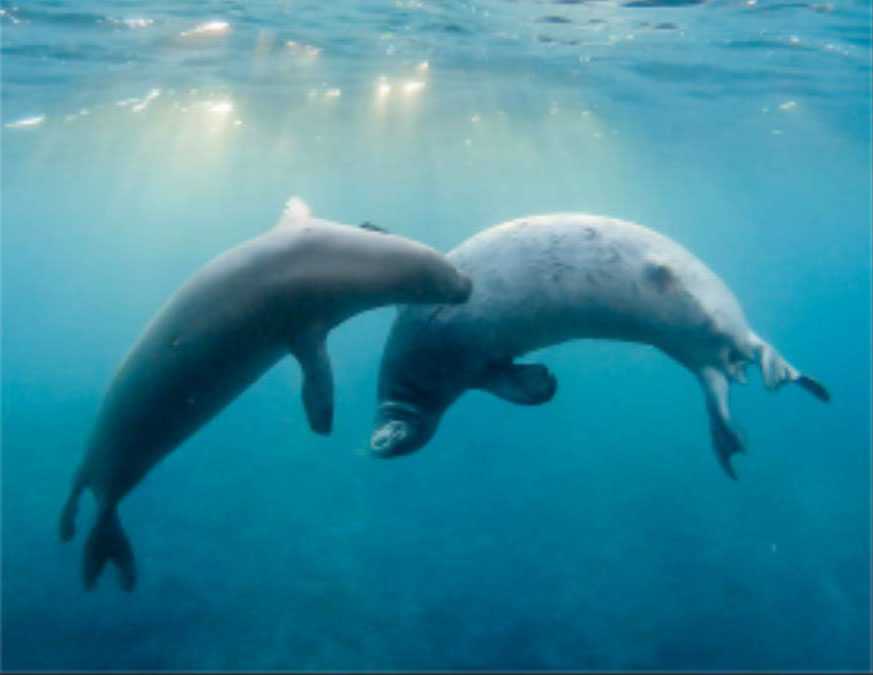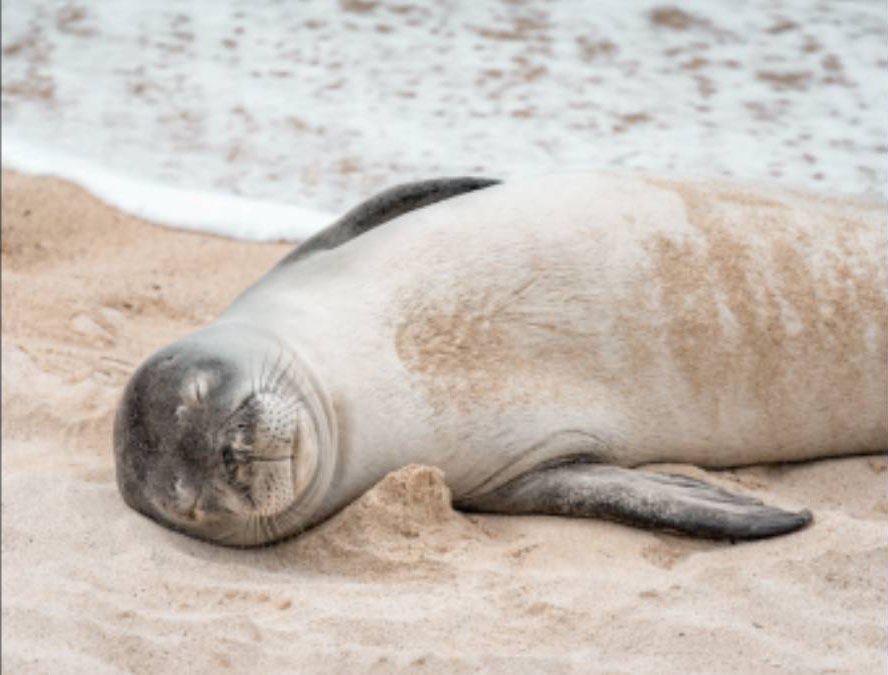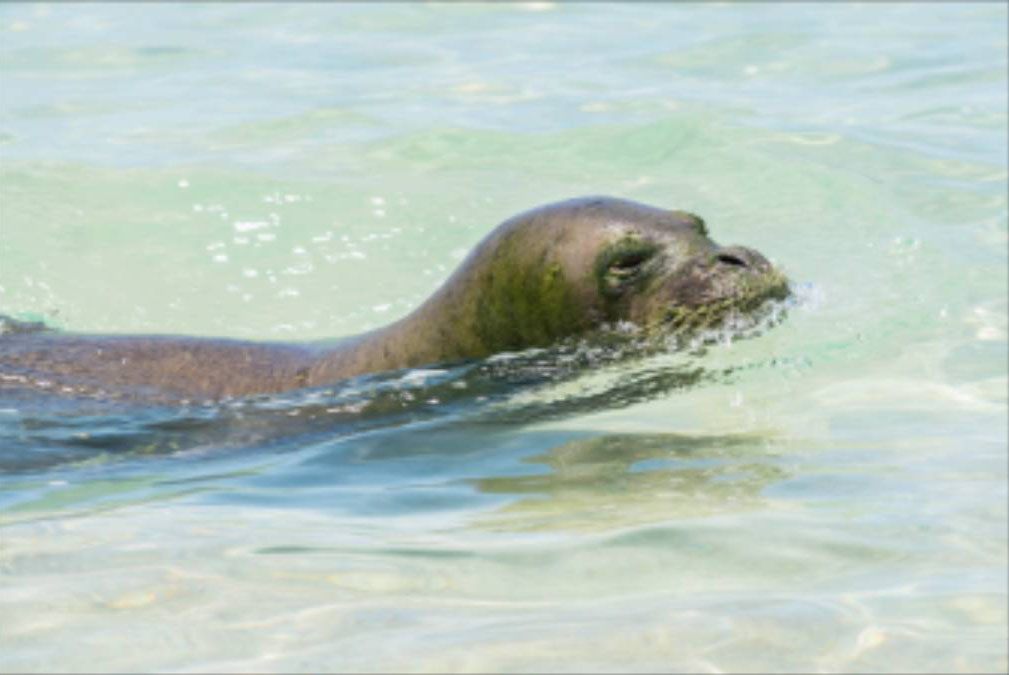Study reveals 25 distinct vocalizations in Hawaiian monk seals
Researchers discover new vocalizations from Hawaiian monk seals, providing opportunities to learn more about the endangered species.

A new study by researchers from the University of Hawaiʻi at Mānoa’s Hawaiʻi Institute of Marine Biology has revealed that endangered Hawaiian monk seals possess a hidden vocal repertoire, using a complex range of sounds under water.
Previously, scientists believed monk seals had a simple vocal repertoire, identifying only six different calls based on seals in human care. In this study, scientists analyzed thousands of hours of passive acoustic data from the wild and discovered 25 distinct vocalizations.
The study, published in Royal Society Open Science, also found that these low-frequency calls are produced by the seals throughout the day. These vocal types were consistently heard across the Hawaiian Archipelago, with calling rates highest at sites where more seals were present. This new understanding of the monk seals’ (Neomonachus schauinslandi) vocal repertoire provides insight into their acoustic behavior.
“We discovered that Hawaiian monk seals—one of the world’s most endangered marine mammals—are far more vocal underwater than previously known,” said Kirby Parnell, lead author of the study and a Ph.D. candidate with the Marine Mammal Research Program. “By analyzing over 4,500 hours of recordings from across the Hawaiian Archipelago, we identified more than 23,000 vocalizations representing at least 25 distinct call types.”

The study, which deployed passive acoustic recorders at five key monk seal habitats from Molokaʻi to the Northwestern Hawaiian Islands, uncovered:
- Expanded vocal repertoire: Researchers identified 20 previously undocumented calls.
- Novel communication strategy: The research provides evidence that monk seals can combine different vocalizations, creating “combinational calls”—a strategy never before reported in any pinniped (seal, sea lion, walrus) species.
- A foraging call: The team discovered one novel elemental call type, “the whine,” produced during foraging, representing only the second known example of a seal species using vocalizations while pursuing prey.
“We were surprised by the sheer diversity and complexity of monk seal vocalizations,” Parnell said. “The discovery of combinational calls, where seals link multiple call types together, suggests a previously unknown level of complexity in pinniped acoustic communication. Finding a new call type—the Whine—associated with foraging behavior was also unexpected and suggests that monk seals may use sound not only for mating or socializing but possibly for foraging purposes as well.”
These results lay the foundation for using passive acoustics to monitor monk seal populations and protect their acoustic habitats as human activity continues in Hawaiian waters. Future research aims to link these documented vocalizations to specific Hawaiian monk seal behaviors, such as foraging, swimming, social interactions, and reproduction.

Next steps involve developing automated detection systems to monitor the seals’ acoustic activity more efficiently and non-invasively.
“This research provides the first comprehensive description of free-ranging Hawaiian monk seal underwater sound production, an important step toward understanding how they use sound for critical life-history events,” said Lars Bejder, professor at Hawaiʻi Institute of Marine Biology and co-author of the study. “Because their vocalizations overlap with the same low-frequency range as many human-generated sounds, such as vessel noise, this work lays the foundations to evaluate how ocean noise may affect communication, reproduction, and behavior in this endangered species.”



